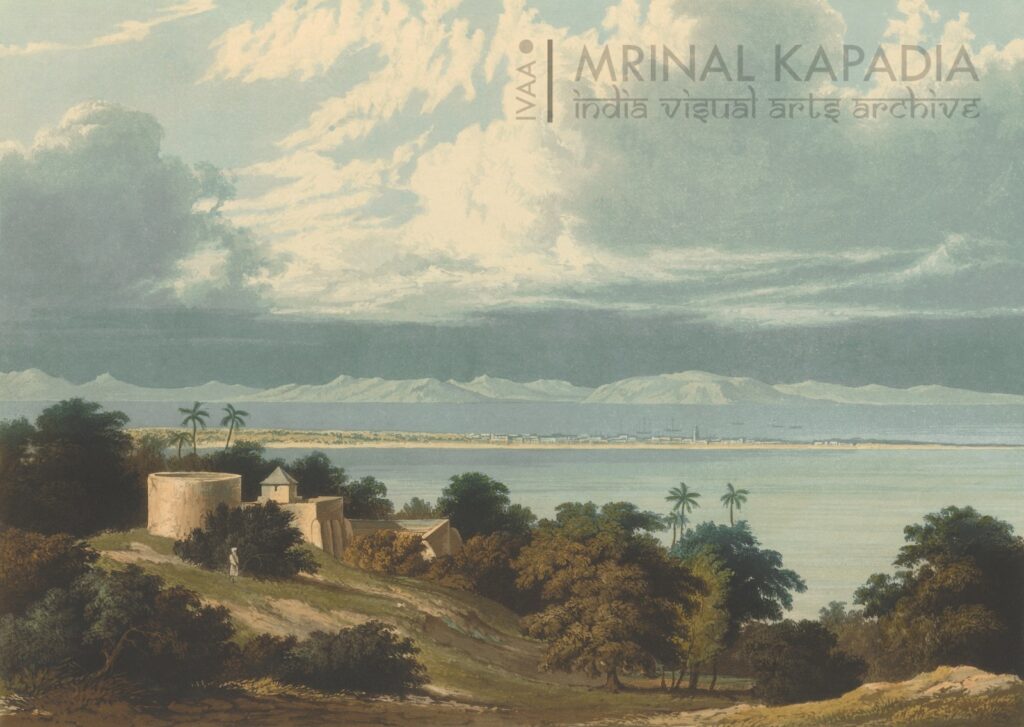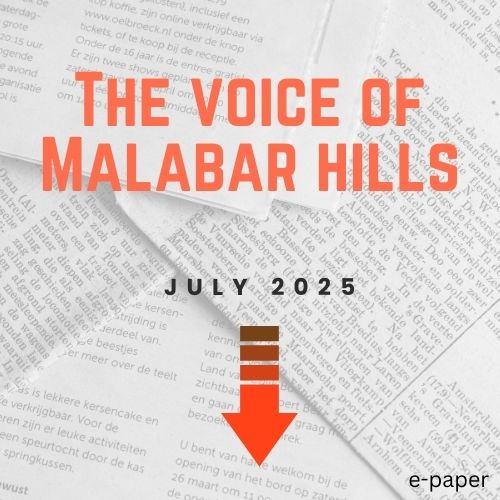
An exquisite view of the ominous monsoon clouds arriving into Bombay taken from Malabar Hill, try to think of a time when there was no respite from their onslaught, with little recourse but to bear witness to Mother Nature’s fury. This view was initially sketched in 1804 by one William Westall, a scarce view of Bombay by a professional artist, as limited art patronage meant that the island attracted few prospective professionals to settle here during the Company period. Westall is best known today for being one of the first artists to work in Australia, and was part of the famous Flinders Expedition.
We see in the foreground the now-defunct Readymoney Tower of Silence, a private dakhma off Ridge Road once visible from Walkeshwar Road. The dakhma still exists, but has long succumbed to the ravages of time. The story goes that when Mancherji Readymoney, one of the first Parsi merchants to set up a successful trade in Canton, was returning to Bombay from China in the latter half of the 1700s, a fellow-passenger from Armenia told him that his family and wealth would be lost if after his death he allowed his bones to mix with those of others, leading him to build his own private tower of silence!
In the background of this view, one can see the waters of Back Bay, delineated by the original Girgaon Chowpatty, which lay approximately along Marine Lines. Marine Drive would come up more than a century after this view. Interestingly, ‘Chowpatty’ is an Anglicized form of “Chau-pati” or “Chaarpatti”, which indicates that ‘four channels’ flowed in and out of this area in a more pristine time, a remnant of our past which remains in living memory only through the name itself.
The structures behind Back Bay formed the fortified town of Bombay, today’s Fort area. The skyline is capped by the tall solitary steeple of St. Thomas’ Cathedral at Horniman Circle, extant today in a modified form. The area would’ve looked significantly more congested just one single year before this view, in 1803, when Bombay was gutted by a fire that engulfed the fort and destroyed over 400 buildings, a third of the structures within the fort.
This sketch by Westall was bought by an enterprising Company officer of Bombay by the name of Robert M. Grindlay, whose name survived with us until recently in the form of Grindlay’s Bank, who published this view in 1826. Grindlay’s own description of this transition of seasons is quite poetic – the approach of the monsoon on the Western Coast Coast of India, he writes, “”is indicated by vast masses of clouds, which, for many days previous to the bursting of the monsoon, collect over the Ghats or Mahratta mountains, assuming an awful and threatening appearance. After a period of nearly eight months of almost total absence of rain, it descends with a violence unknown beyond the tropics, producing an effect … which has the appearance of magic; the surface of the earth … assumes, in the short space of three or four days the most brilliant verdure.”
(Picture and article by Mrinal Kapadia, resident of Cumballa Hill, he is a collector and researcher, and can reached on mrinal.kapadia@gmail.com or via Instagram on @mrinal.kapadia)




